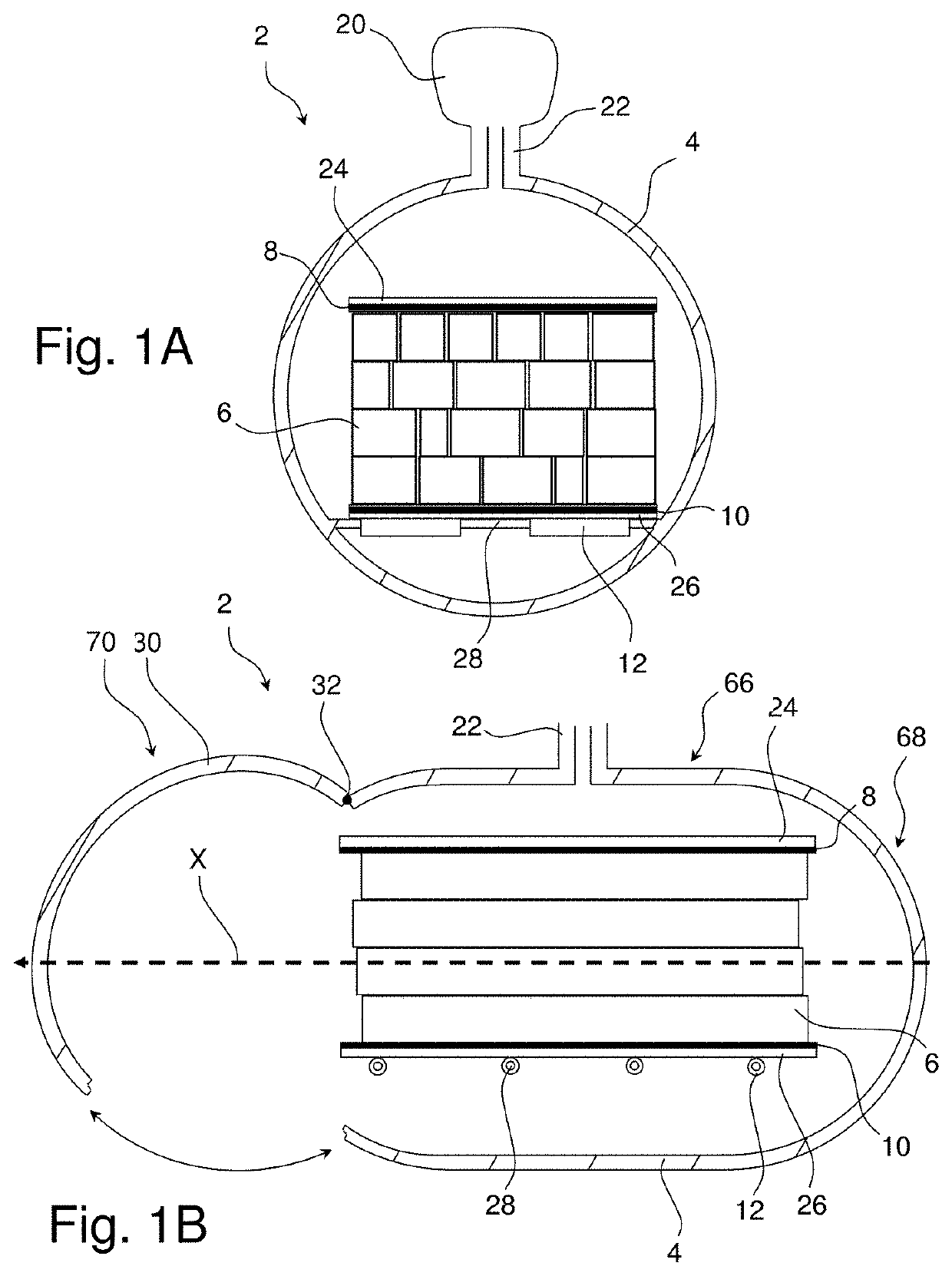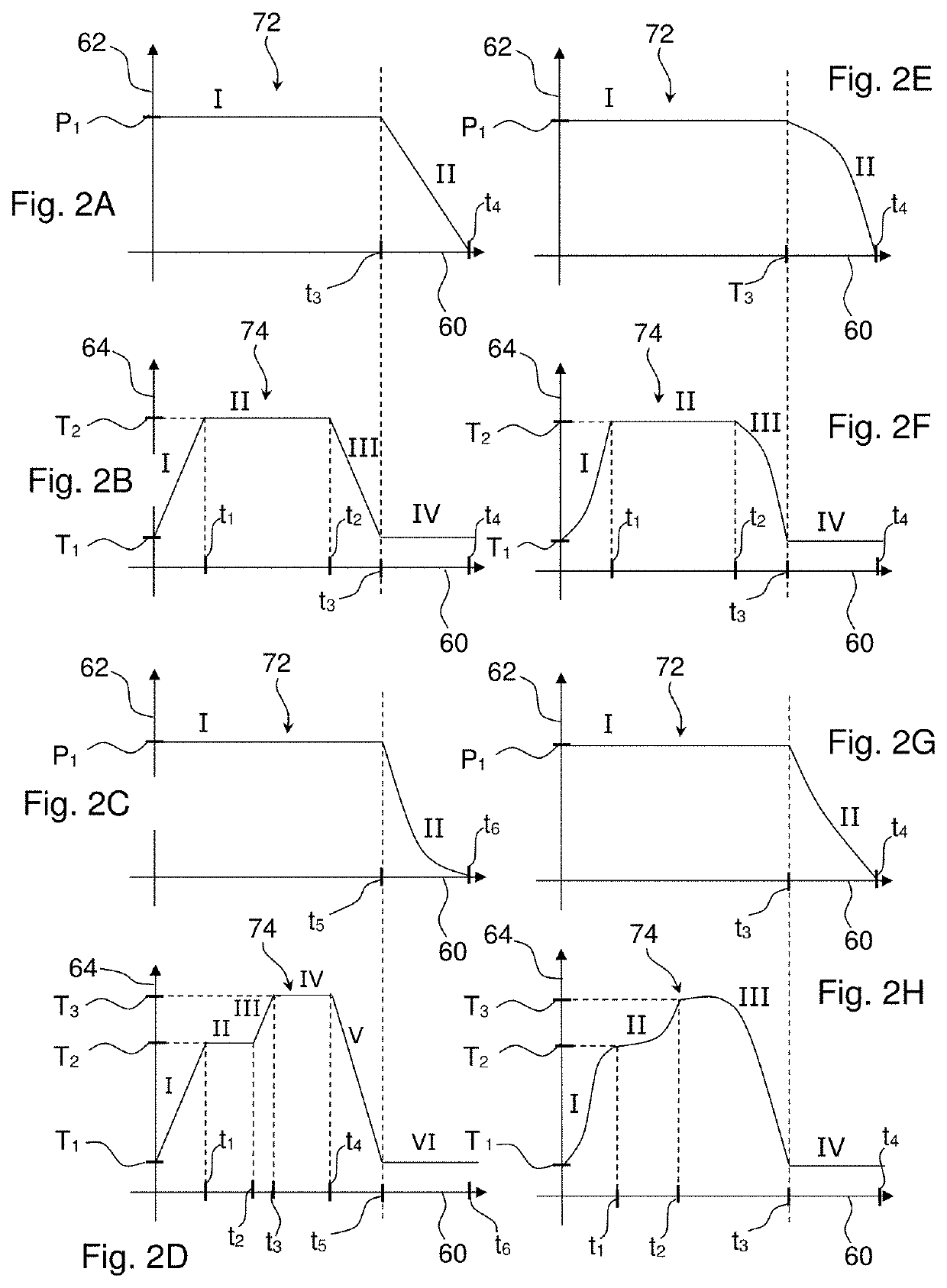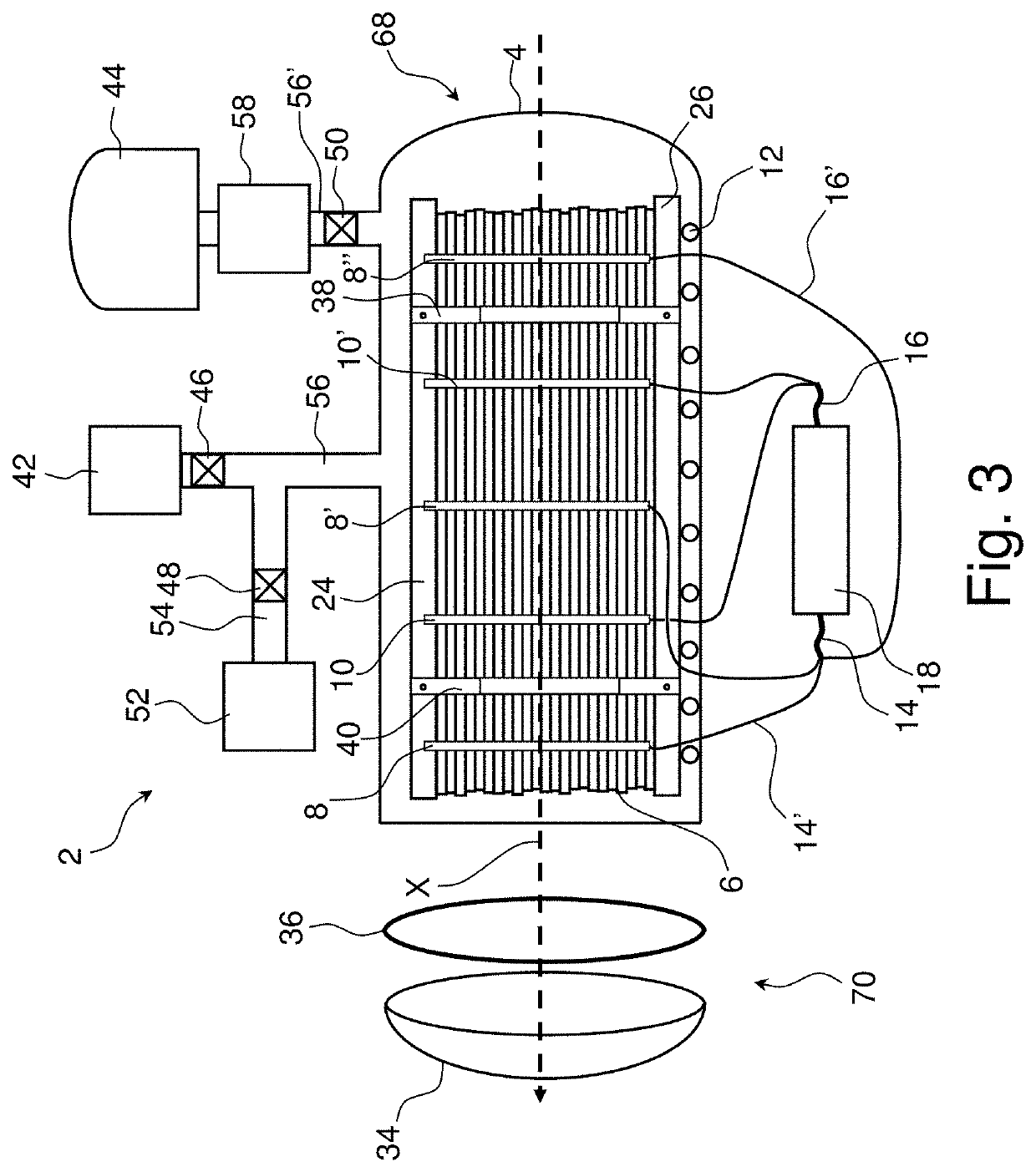Treatment of wood
a heat treatment method and wood technology, applied in the field of wood heat treatment, can solve the problems of reducing the ability of heat treated wood to absorb liquid (and thus water), affecting the effect of heat treatment process, and affecting the effect of heat treatment effect, so as to reduce the pressure, prevent deformation, and reduce the effect of pressur
- Summary
- Abstract
- Description
- Claims
- Application Information
AI Technical Summary
Benefits of technology
Problems solved by technology
Method used
Image
Examples
example 1
[0140]All tests were conducted and approved by The Danish Technological Institute in Denmark where a laboratory machine owned by DWT A / S was installed. Tests were performed using logs of wood (Pine, Spruce, Oak and Meranti Mahogany) with dimensions 1200×45×95 mm having a moisture content of 20-25%. The logs of wood were subjected to treatment with a selection of solutions (liquids) selected from water containing colour pigment, alum (5%, 10%, 20%), boric solution (20%), and copper, respectively. The logs of wood were treated using the method of the invention by which the logs of wood were subjected to a pressuring step, and a heating step. The results are presented in Example 2.
example 2
[0141]The logs of wood treated according to Example 1 were analysed for uptake of different liquids at various concentrations. The results are indicated in Table 1. “Full imp.” denotes “full impregnation”. The uptake of the various solutions were determined on the basis of the weight of the logs before and after being treated using the method according to the invention.
[0142]
TABLE 1Test results.SpruceMerantiLiquidPine(25%)OakMahoganyWater with colour579 kg / m3478 kg / m3 340 kg / m3307 kg / m3pigmentAlum 5% solutionFull imp.Full imp.Alum 10% solutionFull imp.Full imp.Alum 20% solutionFull imp.Full imp.Boric solution 20%Full imp.Wood tar / linseed+300 kg / m3oil 50 / 40CopperFull imp.438 kg / m3(Celcure AC800)
[0143]The results confirms that the method according to the invention can be controlled so as to provide complete or partial absorption of liquids through the wood. The laboratory plant has further proven a stable production of Spruce and Pine wood, where alum, and copper have been recorded b...
example 3
[0145]The impregnation depth is a very important parameter in the treatment of wood. The impregnation depth determines the possible uses of the wood and the durability thereof. Most countries apply very strict regulations to outdoor uses of impregnated wood as well as to fire resistance, durability and resistance towards rot and fungi. Furthermore, impregnated wood must also fulfil demands as regards environmental issues and human health issues due to the use of chemicals and biocides in the impregnation process.
[0146]In general, the following impregnation depths are required:[0147]Full impregnation of Spruce wood (25% humidity) and Pine heartwood, which both cannot be impregnated using traditional treatments.[0148]Full impregnation for manufacturing of wood being fire resistant, having extremely long lifecycle (marina piles) and for building structural elements.[0149]6 mm impregnation for manufacturing of wood with increased durability and fire resistance performances, for outdoor ...
PUM
 Login to View More
Login to View More Abstract
Description
Claims
Application Information
 Login to View More
Login to View More - R&D
- Intellectual Property
- Life Sciences
- Materials
- Tech Scout
- Unparalleled Data Quality
- Higher Quality Content
- 60% Fewer Hallucinations
Browse by: Latest US Patents, China's latest patents, Technical Efficacy Thesaurus, Application Domain, Technology Topic, Popular Technical Reports.
© 2025 PatSnap. All rights reserved.Legal|Privacy policy|Modern Slavery Act Transparency Statement|Sitemap|About US| Contact US: help@patsnap.com



